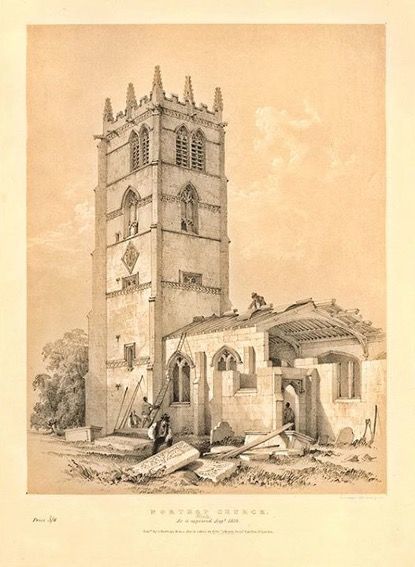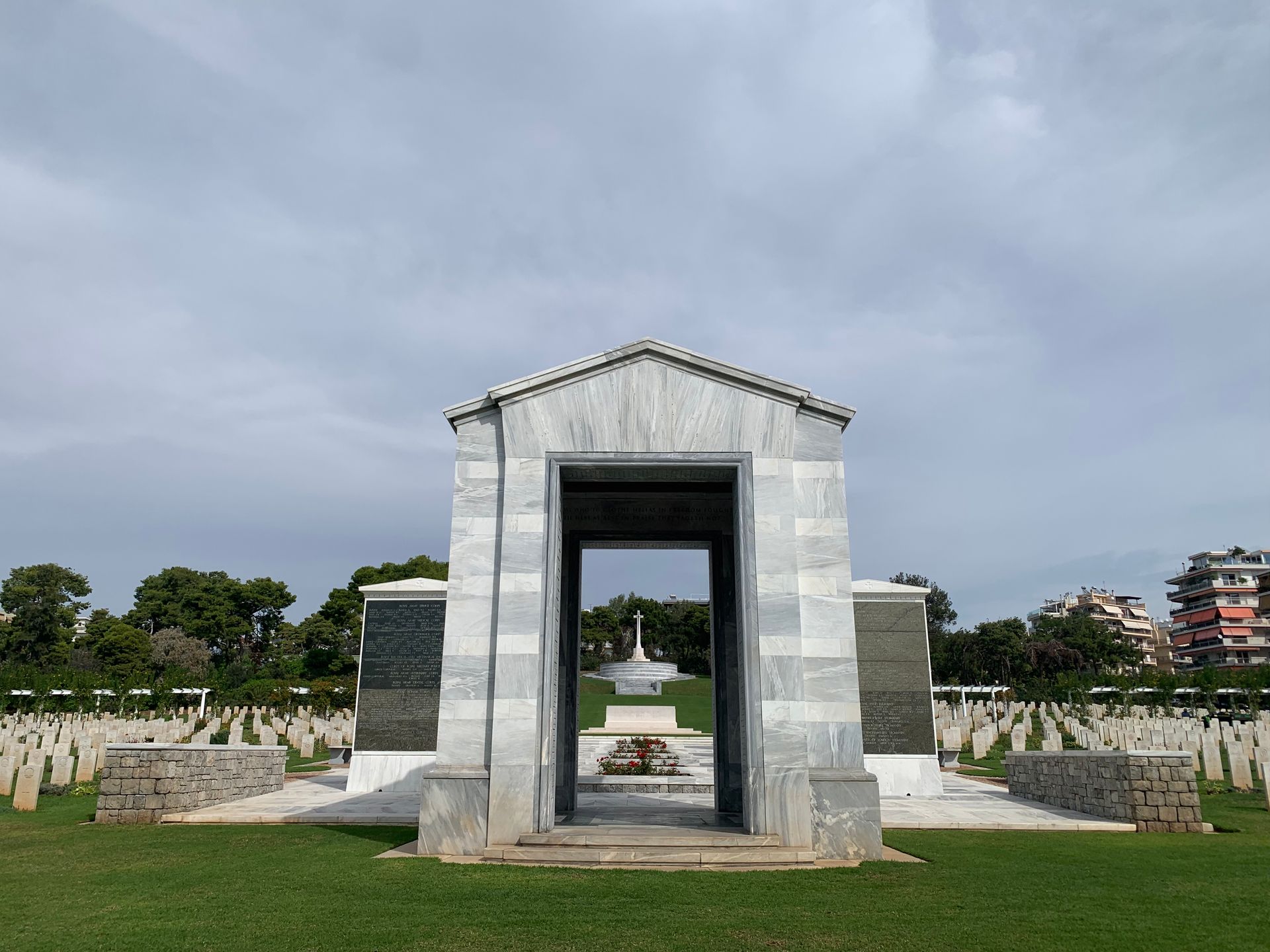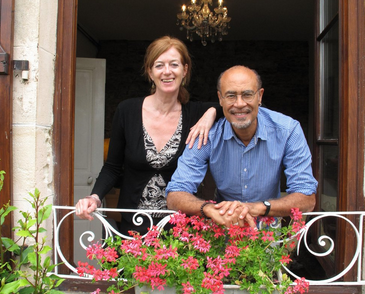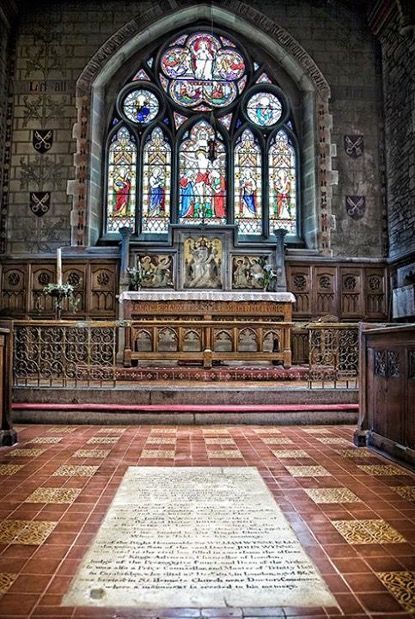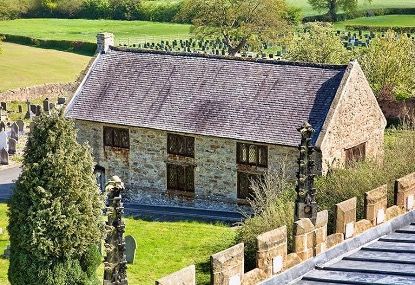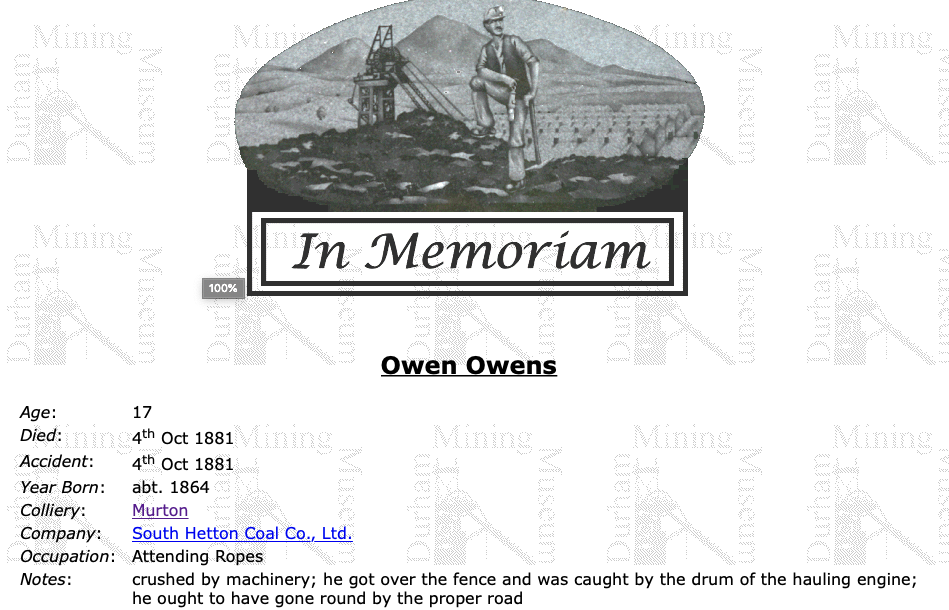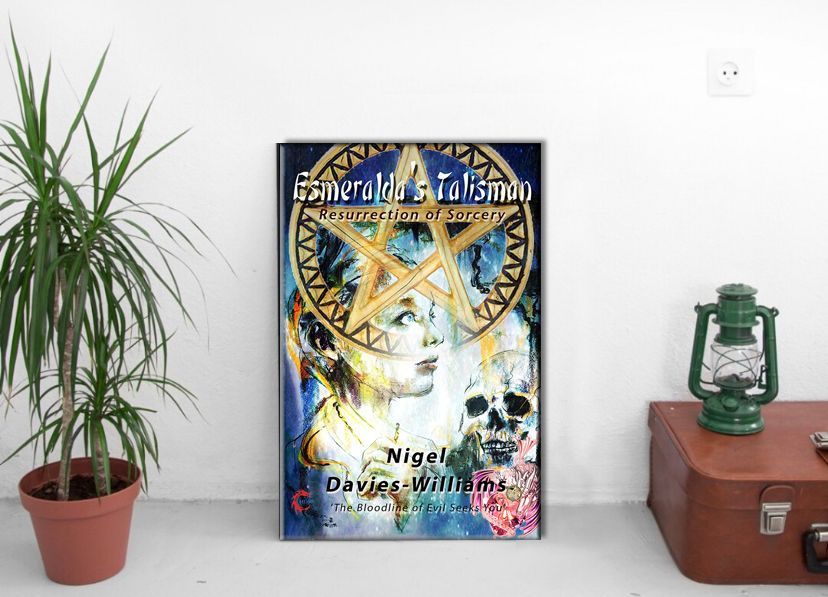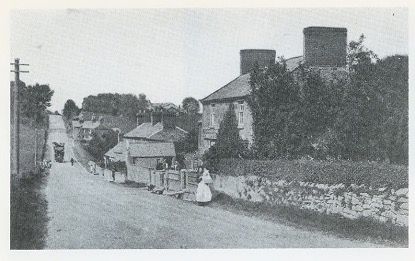Above is Northop Church, undergoing major repair and restoration, as sketched by artist Edward Falkener in August 1839. The image, depicting the commencement of major re-structuring is now held at the British Museum. The work wasn't formally completed until two years after this sketch was made.
At the beginning of the 19th century the main body of Northop Church had fallen into a dangerous state of repair, so much so that the church needed a rebuild. This commenced on 12th April 1839 and lasted until 4th November 1840. The church tower was in a good state of repair and was not part of the re-build. The tower remained as built in the reign of Henry VII (1485 - 1509)...he's the one who defeated Richard III...you know, the 'Body in the Car Park King!'
The picture shows the nave of the church being reconstructed under the supervision of local builder Mr Thomas Jones. The British Museum description states that the man in the foreground is kneeling on the ‘old ruins’ (it could even be Thomas Jones from some accounts), and there is certainly lots of activity taking place in and on the building. Some of the people in the image might even be your relatives if your ancestry, like mine, harks back to Northop in the distant past.
The image is a lithograph on beige printed background. Underneath the image it says: “Northop Church, Flints. As it appeared August 1839” "Day & Haghe Lithrs' to the Queen", "Lithd. by G. Hawkins from a sketch taken by Edwd. Falkener, Archt. 6 Arthur St. London"
The image is priced 3/6
(less than twenty pence today) on the left of the image - the Queen referred to above is Queen Victoria, newly on the throne since 1837.
Northop Church was formally re-opened on 6th October 1840 - the cost of repairs was £1,450.00.
Edward Falkener, (1814–1896)
An architect and archaeologist, the son of Lyon Falkener (1777–1864), clerk of the ordnance department in the Tower of London. Falkener was articled to John Newman (1786–1859), an architect. He became a student of the Royal Academy in 1836, and in 1839 gained its gold medal for a design for a cathedral church….and later was involved with Northop Church restructuring and design. Northop should be quite proud of this connection.
Incidentally, the annex depicted on the side of the church now no longer exists and there is little indication on the church today that it ever was built. Did the planners change their minds part way through repairs? We will never know.
If you walk into the church grounds nowadays you will note that you walk up onto a raised area of ground and all indications are that the church is built over an ancient Celtic religious site; therefore it would originally have been a site of Pagan worship. There is much evidence across the UK to show that upon the arrival of Christianity, during the late Roman and Early Dark Ages period, these 'Pagan Sites' would have been ripe for 'take over' by early Christians to show the power of the early church over ancient paganism in Britain.
#Northop #steurgain&stpeters #Llaneurgain #Flintshire #Christianity #Pagansites #Celts

